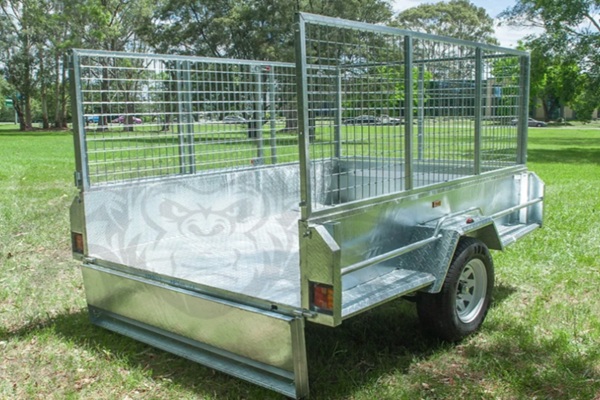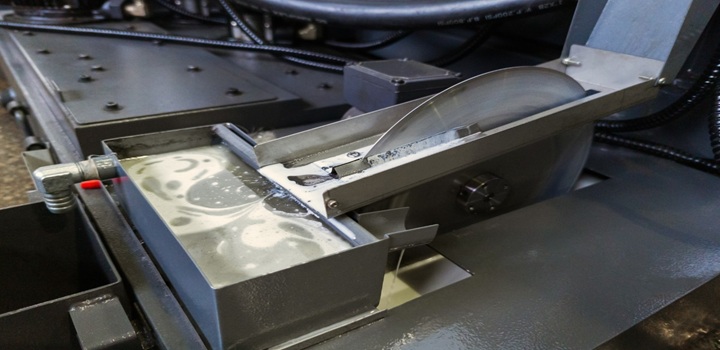by admin | Jul 10, 2025 | Service
In a world increasingly shaped by innovation, product designers sit quietly at the intersection of imagination and real-world impact. They’re the unsung heroes who turn vague ideas into objects that change how we live, work, move, and interact with the world — everything from the chair you’re sitting on to the phone you can’t stop scrolling. But what does the career path actually look like for someone pursuing product design? And how do you go from sketching in a classroom to seeing your ideas come to life on production lines?
Let’s dive into what it takes to build a career in product design — and how that career can be far more than just a job.
The Starting Line: Studying Product Design
For most designers, it begins with an eye for detail and a curiosity about how things are made. Courses in product or industrial design offer a foundation in technical skills (like CAD, 3D printing, and materials science) as well as creative problem-solving. Students learn to balance aesthetics with function, user needs with manufacturing constraints — and perhaps most importantly, to think critically.
A strong portfolio is often the golden ticket to internships and entry-level roles. Early projects might not be glamorous, but they’re the training ground for learning how to design within real-world limits: budgets, timelines, and client expectations.
The First Few Years: Sketches, Software & Feedback Loops
As a junior designer, much of the job revolves around concept development, user research, and digital modelling. You’ll learn how to iterate — quickly. Clients change their minds. Prototypes fail. Materials don’t behave as expected. But every bump in the road teaches resilience, adaptability, and the art of collaboration.
You might work alongside engineers, marketers, supply chain managers, or even sustainability experts. This cross-disciplinary exposure is where designers start to realise: their role is as much about communication and strategy as it is about aesthetics.
Designing for Real Life — and Real People
One of the most rewarding shifts in a product designer’s career comes when they stop designing “things” and start designing solutions. That’s when the job transcends cool sketches and renders, and becomes something with real social, environmental, or economic impact.
Whether it’s medical devices that improve patient care, furniture made from recycled materials, or more efficient tools for small businesses — the best designs improve lives in subtle but powerful ways. The emotional payoff? Seeing someone use and benefit from something you helped bring into the world.
Impact Over Ego: Sustainable, Responsible Design
Modern product design is no longer just about style or novelty. With climate concerns, global supply chains, and consumer ethics in the spotlight, designers now face a bigger responsibility: to create products that are sustainable, inclusive, and meaningful.
This might mean choosing recyclable materials over cheaper ones, reducing waste through clever manufacturing processes, or designing products that last — rather than end up in landfill a year later. And that’s where the impact becomes generational.
Beyond the Studio: Leadership & Entrepreneurship
As designers gain experience, many move into leadership roles, managing design teams, shaping strategy, or even founding their own businesses. These paths require new skills: negotiation, budgeting, mentoring, business development. The toolkit expands, but the creative DNA stays the same — it’s still about solving problems and making things better.
For some, the ultimate goal isn’t just to design a great product, but to build a company or movement around design thinking. That could mean launching a boutique furniture label, working with NGOs to design for underserved communities, or consulting for startups that need help refining their vision.
Final Thoughts: Making Design Mean Something
Being a product designer isn’t about fame or flash. It’s about craft. It’s about taking a spark of an idea and turning it into something useful, thoughtful, and lasting. And when done well, it’s a career that leaves a trail of real-world impact behind — in homes, hospitals, schools, workplaces, and cities.
For students wondering if this path is worth pursuing: if you enjoy solving problems, thinking creatively, and making the world just a little bit better through design — the answer is a loud and confident yes.
by admin | Jul 2, 2025 | Professional
In today’s fast-paced business world, the demand for flexible and responsive project delivery has never been greater. As a result, Agile project management training has become an essential investment for professionals seeking to stay competitive and deliver value faster. But with so many training options and frameworks available, how do you choose the right path?
This guide explores what Agile project management training involves and the key factors to consider before diving in.
What Is Agile Project Management?
Agile project management is a modern approach to managing projects that emphasizes collaboration, adaptability, and customer-centricity. Unlike traditional “waterfall” methods, Agile allows teams to work in short, iterative cycles known as sprints or iterations. This enables faster delivery, continuous improvement, and the ability to adapt to changing requirements.
Popular Agile methodologies include Scrum, Kanban, Lean, and SAFe (Scaled Agile Framework). While each framework has its own focus, they all share the core principles outlined in the Agile Manifesto: individuals and interactions over processes, working software over documentation, customer collaboration over contract negotiation, and responsiveness to change over following a rigid plan.
Why Agile Project Management Training Matters
Agile methods may seem intuitive, but successful implementation requires a deep understanding of the mindset, practices, and tools involved. Agile project management training helps professionals:
- Master frameworks like Scrum and Kanban
- Understand Agile roles such as Product Owner and Scrum Master
- Learn how to manage stakeholder expectations in a fast-moving environment
- Improve team communication, planning, and delivery
- Gain industry-recognized certifications (e.g., Certified ScrumMaster or PMI-ACP)
For businesses, training improves project outcomes, enhances cross-functional collaboration, and leads to better value delivery. For individuals, it opens doors to new roles, promotions, and freelance opportunities in Agile-focused organizations.
Key Things to Consider Before Starting Agile Project Management Training
1. Your Career Goals
Before choosing a training program, think about your long-term goals. Are you aiming to become a Scrum Master, Agile Coach, or Product Owner? Or are you managing projects and want to adopt Agile practices without fully changing your job title?
If you’re early in your career, a general introduction to Agile or Scrum may be enough. If you’re already working in a project environment, certifications like PMI-ACP or Certified Scrum Professional (CSP) could be more appropriate.
2. The Right Framework for You
Agile isn’t a one-size-fits-all solution. Scrum is the most popular entry point, but it may not be the best fit for every team or organization. Kanban works well in environments that require visual workflow tracking, like IT support or marketing. SAFe is designed for larger organizations managing multiple teams and portfolios.
Choose training that aligns with the type of work you do and the team or industry you’re in.
3. Accreditation and Credibility
With the growth in demand for Agile training, many providers have entered the market—but not all are created equal. Look for courses offered by recognized bodies such as:
- Scrum Alliance
- Scrum.org
- PMI (Project Management Institute)
- ICAgile (International Consortium for Agile)
- Scaled Agile (for SAFe)
Make sure the trainer is experienced, certified, and preferably has real-world Agile delivery experience—not just academic knowledge.
4. Learning Format
Agile project management training is available in a range of formats:
- In-person workshops: Ideal for hands-on learners and team-based learning
- Live online sessions: Great for real-time interaction without needing to travel
- On-demand/self-paced courses: Best for those with irregular schedules
Consider your preferred learning style, schedule, and budget. Some programs even offer hybrid models or cohort-based learning for a balance of flexibility and support.
5. Certification and Exam Preparation
Many Agile project management courses lead to certification, but passing the exam isn’t always automatic. Be sure to check:
- Whether the course includes an exam or only prepares you for one
- If practice tests and exam support are provided
- How long the certification is valid and what’s required to maintain it
Also, be realistic about how much study time you’ll need. Some certifications require a few days of training, while others (like PMI-ACP) demand more in-depth preparation and verified experience hours.
6. Team vs. Individual Training
Are you training solo, or is your organization investing in Agile for an entire department? Team-based training can be more impactful, as everyone learns the same language and practices at once. It also helps build alignment and fosters a shared understanding of Agile principles.
For individuals, the key is to find training that provides not just theory, but actionable skills you can apply immediately—even if your organization hasn’t fully adopted Agile yet.
7. Post-Training Support
Some of the best Agile training providers offer post-course support, including:
- Access to alumni groups or professional communities
- One-on-one coaching or mentoring
- Templates and Agile tools for use in your projects
- Continued education credits or advanced modules
Choosing a provider with strong after-training resources can make a big difference in applying what you’ve learned and staying current.
Final Thoughts
Agile project management training is a valuable investment in both personal and organizational growth. However, choosing the right course isn’t just about picking a certification. It’s about aligning your training with your goals, experience level, and the context in which you work.
Whether you’re just beginning your Agile journey or looking to deepen your expertise, take time to explore your options, verify course credentials, and select a learning experience that sets you up for long-term success. Agile isn’t just a methodology—it’s a mindset, and the right training can help you adopt it with clarity and confidence.

by admin | Jun 18, 2025 | Health
In 2025, more people than ever before are talking about neuroendocrine cancer, and for good reason. Once considered a rare and misunderstood group of tumours, neuroendocrine cancers (also known as NETs) are now receiving long-overdue attention from researchers, healthcare professionals, and patient advocacy groups.
Driven by increased public awareness, better diagnostic tools, and the tireless efforts of organisations like NeuroEndocrine Cancer Australia, NETs are finally being recognised as a complex but manageable disease that demands early detection, personalised care, and long-term support.
What is neuroendocrine cancer?
Neuroendocrine tumours (NETs) develop from neuroendocrine cells, which exist throughout the body and help regulate essential functions such as digestion, metabolism, and hormone release. These tumours can appear almost anywhere, including the pancreas, small intestine, lungs, and rectum, and can range from very slow-growing to highly aggressive.
Some NETs produce hormones and cause symptoms like flushing, diarrhoea, wheezing, or changes in blood sugar. These are called functional tumours. Others grow silently for years and are only detected when they spread or start pressing on surrounding organs.
Why are NETs gaining more attention in 2025?
While neuroendocrine cancer has always existed, several factors are driving increased awareness in 2025:
1. Rising diagnosis rates
Improvements in imaging techniques such as Gallium-68 DOTATATE PET/CT scans, along with greater clinical awareness, mean that NETs are now being diagnosed more frequently, and earlier. This doesn’t necessarily mean the disease is becoming more common, but it is being picked up more often, including in people who previously would have gone undiagnosed or misdiagnosed.
2. Patient advocacy and real stories
Thanks to strong advocacy from patient organisations, celebrities, and individuals sharing their journeys, public understanding of neuroendocrine cancer is evolving. Awareness campaigns like NET Cancer Day and media coverage of notable figures affected by the disease are helping break the stigma around what was previously considered a “rare” cancer.
3. More targeted treatments
In the past, people diagnosed with NETs often had limited treatment options. Now, therapies like somatostatin analogues, peptide receptor radionuclide therapy (PRRT), and targeted drugs such as everolimus and sunitinib are offering real hope for people living with NETs. These advancements are reinforcing the importance of early diagnosis and specialist care.
4. Multidisciplinary care models
NETs require a specialised, multidisciplinary approach, often involving oncologists, endocrinologists, nuclear medicine physicians, gastroenterologists, surgeons, and NET nurse coordinators. In 2025, more cancer centres are embracing this model of care, improving outcomes and quality of life for patients across Australia.

(Image: Importance and rise of multidisciplinary care. Credit: LumiNola/Getty Images Signature)
Challenges remain: the importance of education
Despite progress, neuroendocrine cancer remains poorly understood by many, including some healthcare professionals. Patients frequently report delays in diagnosis, with symptoms often being mistaken as more common conditions such as irritable bowel syndrome, asthma, or menopause.
For this reason, education and public awareness remain key priorities. Greater knowledge leads to earlier referrals, more timely investigations, and better access to the right care.
How awareness is helping patients
Increased public awareness isn’t just about headlines, it’s about improving lives. People are learning to recognise the signs, advocate for themselves, and connect with specialist services sooner. Resources from organisations like NeuroEndocrine Cancer Australia (including the NET Nurse Line, patient support groups, and educational webinars) are helping people navigate the system with greater confidence.
More awareness also supports research. The more people know about NETs, the more likely it is that funding will be directed to clinical trials, genetic studies, and long-term data collection. This research is essential to understanding why NETs develop and how best to treat them in future.
Who is at risk of neuroendocrine cancer?
NETs can affect people of any age, though they are more commonly diagnosed in individuals aged 50 and over. Some are linked to genetic conditions like Multiple Endocrine Neoplasia (MEN1) or Von Hippel-Lindau (VHL) syndrome, while others occur sporadically.
In recent years, researchers have also been exploring possible links between environmental factors, chronic inflammation, and hormone-disrupting chemicals. But these areas require more study before definitive conclusions can be made.

(Image: NETs can affect people of any age. Credit: FatCamera/Getty Images Signature)
Looking ahead: what’s next for NET awareness?
As we move through 2025 and beyond, the future of neuroendocrine cancer care looks promising. Key priorities for the next phase of NET advocacy include:
- Improving GP and community health professional training to recognise NET symptoms earlier.
- Increasing access to NET centres of excellence and specialised diagnostic services.
- Expanding clinical trials and research into new therapies, including immunotherapy and liquid biopsies.
- Providing tailored psychosocial support for patients and families managing this chronic condition.
Spreading the word
If you or someone you know is living with neuroendocrine cancer, know that you’re not alone. Organisations like NeuroEndocrine Cancer Australia are here to help. And the more people who understand NETs, the stronger the support system becomes.

by admin | Jun 9, 2025 | Service
When it comes to transporting tools, equipment, camping gear, or materials across Australia’s wide-open roads, having a reliable box trailer is a game-changer. Whether you’re a tradesperson, adventurer, or weekend DIYer, a sturdy and dependable box trailer offers unmatched versatility. Among the top choices in the Australian market is Kingkong Trailers, a trusted name known for its durability, innovation, and value.
In this article, we’ll explore why box trailers in Australia are a must-have, what to look for when buying one, and why Kingkong Trailers should be your go-to provider.
What is a Box Trailer?
A box trailer is a type of utility trailer with four enclosed sides and a flat base, ideal for carrying everything from gardening supplies to motorbikes. Designed to be towed by a car or ute, they come in various sizes and configurations to suit different needs—some with cages, others with tipping features, and many with customizable options.
Why Box Trailers Are Essential in Australia
Australia’s rugged landscape and vast distances mean that transport solutions must be tough and adaptable. Here’s why box trailers are widely used across the country:
- Versatility: From transporting camping gear to building materials, box trailers can handle it all.
- Cost-Effective: A one-time investment that saves you on courier or truck rental fees.
- DIY Friendly: Ideal for home renovators and gardening enthusiasts.
- Rural and Urban Utility: Perfect for both city dwellers and farmers alike.
What to Look for in a Box Trailer
Before you buy a box trailer, consider the following key features:
1. Durability and Build Quality
Australia’s harsh conditions demand trailers built to last. Look for trailers with a fully welded steel frame, hot-dipped galvanization, and a strong checker plate floor.
2. Load Capacity
Choose a trailer with the right ATM (Aggregate Trailer Mass) rating for your needs. If you plan to transport heavy machinery or bulk loads, a higher capacity is essential.
3. Size and Dimensions
From compact 6×4 trailers to spacious 10×6 options, the right size depends on your specific tasks. Consider what you’ll be carrying most often.
4. Braking System
For larger trailers or frequent highway use, ensure your trailer includes mechanical or electric brakes for added safety.
5. Optional Add-Ons
Extras like cages, tipping functions, ladder racks, or toolboxes can increase the functionality of your box trailer.
Why Choose Kingkong Trailers?
When you’re in the market for a box trailer in Australia, Kingkong Trailers is a name you can trust. Here’s what sets them apart:
✅ Australian Made for Australian Conditions
All Kingkong Trailers are designed to withstand Australia’s toughest terrains and weather. They use high-grade steel and meticulous craftsmanship in every unit.
✅ Huge Product Range
With options like:
- 6×4 and 7×4 box trailers
- Heavy-duty single and tandem axle models
- Cage trailers
- Hydraulic tip trailers
…there’s a trailer for every type of user.
✅ Competitive Prices & Finance Options
Kingkong Trailers offers affordable pricing without compromising on quality. They even offer finance options to help you own your trailer sooner.
✅ Easy Online Shopping & Delivery
Their user-friendly website allows you to browse, compare, and purchase trailers online. Many models are available for nationwide delivery across Australia.
✅ Exceptional Customer Support
Their experienced team is ready to help you choose the perfect trailer based on your usage, budget, and towing vehicle.
Explore their full range: Click here
Real Reviews from Aussie Buyers
Here’s what happy customers are saying about Kingkong Trailers:
“Bought a 7×5 trailer with cage for my landscaping business—built like a tank and handles everything I throw at it!”
— Dave T., Victoria
“Great customer service and fast delivery. Trailer arrived ready to go and perfect for weekend camping trips.”
— Jess K., Queensland
“The best value for money I could find. Kingkong’s trailers are tough, reliable, and look professional.”
— Martin H., NSW
Maintenance Tips for Longevity
To keep your box trailer in top condition:
- Check the tyre pressure regularly
- Inspect and grease wheel bearings every 6-12 months
- Rinse off dirt and salt after beach trips
- Store under cover or use a trailer tarp to protect from the elements
Final Thoughts
Whether you’re hauling gear to a job site, moving house, or heading off on an outback adventure, a box trailer is an essential asset for any Aussie. With their strong builds, custom features, and unbeatable prices, Kingkong Trailers stands out as a top provider of box trailers in Australia.
Invest in a trailer that’s built to go the distance—check out the full range of Kingkong Trailers today and make your next trip safer, easier, and more efficient.

by admin | May 28, 2025 | Business
Oil water separators are essential for petrol stations, construction sites, marine operations, car wash businesses and any other business or location prone to oil contamination.
These systems prevent harmful discharge into stormwater by separating oil, grease, and hydrocarbons from wastewater. Ensuring compliance with environmental legislation throughout Australia, they also play a role in water recycling for businesses looking to reduce mains water usage and any wastewater disposal costs.
From workshops to wash bays, oil water separators are adaptable to a variety of environments and contamination levels. The following breakdown explains how these systems function, the key benefits for your business, and why professional guidance is essential.
How Do Oil Water Separators Work?
Oil separators operate by using gravity and separation technology to remove oil and hydrocarbons from water. The process typically involves the following steps:
- Initial Separation – Wash water enters the oil separator, where heavier solids such as dirt and debris, settle at the bottom.
- Oil Separation – Lighter oils and hydrocarbons float to the surface, while water flows through internal baffles that enhance separation.
- Coalescing Plate Technology (Advanced Systems) – Specialised coalescing plates help small oil droplets merge into larger droplets, making them easier to separate and remove.
- Clean Water Discharge – The treated water is either discharged in compliance with regulations or directed to a recycling system for reuse.
Oil Water Separators Vs. Oil Skimmers
While oil skimmers are often used for removing surface oils from water, they are generally less effective than oil separators in commercial applications. Skimmers work by using belts, disks, or brushes to remove floating oil, but they struggle with emulsified oils and small oil droplets that remain suspended in water.
Key advantages of oil separators over oil skimmers:
- More Comprehensive Treatment: Oil separators can handle free-floating and emulsified oils, whereas skimmers only remove surface oil.
- Better Compliance: Skimmers may not meet stringent wastewater discharge regulations, while separators ensure full compliance.
- Higher Efficiency: Coalescing plate separators significantly improve oil separation, making them more effective for high-volume wash bays.
- Reduced Maintenance: Skimmers require frequent cleaning and adjustment, whereas oil separators operate with minimal maintenance.
Due to their ability to handle both free-floating and emulsified oils, oil water separators are the gold standard in commercial wastewater treatment. As such, if you’re a business or commercial entity seeking a long-term, high-performance solution for wastewater management, this is the option most experts recommend.

(Image: Oil skimmers cannot remove suspended oil. Credit: z1b/Getty Images)
Why Oil Water Separators Are Essential in Commercial Wastewater Management
As noted above, the presence of oil and hydrocarbons in wastewater can lead to severe environmental and operational challenges. Oil water separators are specifically designed to address these risks by providing effective removal of contaminants, ensuring cleaner water discharge and promoting sustainable water reuse practices.
Investing in a quality oil water separator as part of a commercial water treatment system offers several benefits, including:
- Environmental Protection: Prevents oil pollution and protects local water bodies.
- Regulatory Compliance: Meets industry and government wastewater discharge standards.
- Improved Water Recycling: Enhances the efficiency of water treatment and recycling systems.
- Reduced Maintenance Costs: Prevents blockages and damage to wastewater infrastructure.

(Image: Efficient wastewater management. Credit: Armastas/Getty Images)
The Importance Of Investing In Superior Oil Water Separator Solutions
Wherever there are large volumes of water at a high flow rate that contain oil, grease or similar contaminants, measures must be in place to stop these being washed into waterways and remain legally compliant. This is why installation of an oil water separator is an essential requirement for commercial wastewater treatment, whether in wash bays, workshops or industrial sites.
Rather than navigating this independently, ensuring your business invests in a quality oil water separator, tailored to your business needs and installed by an expert is strongly recommended.
Not only will this provide peace of mind that your operations can continue to run smoothly, this also ensures that you are operating sustainably, responsibly and that legal repercussions from non-compliance can be avoided.







